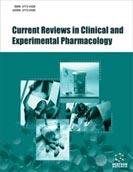Abstract
Background: Deficits in cognitive functions are observed in various diseases. The term “nootropics” refers to the compounds that increase mental functions, including memory, motivation, concentration and attention. Given the complexity and vastness of the processes involved in cognition, developing an appropriate animal model for the screening of nootropic agents still remains a daunting task.
Objectives: This review attempts to elicit the current trends in the animal models being used for screening of nootropic agents and effectively use this knowledge to improve prospects embarking on this area of research.
Methods: Electronic searches were carried out on PubMed using the keywords “nootropic agents”[MeSH Term] OR “nootropic drugs” [MeSH Term] AND “animal model” [MeSH Term] OR “animal model, experimental” [MeSH Term]. All relevant studies from 2016 to 31st August, 2021, were then reviewed to meet the stated objective.
Results: The most commonly used disease model for screening of nootropic agents was found to be the animal model of Alzheimer’s disease. Disease models of vascular dementia or stroke, depression or anxiety, schizophrenia, epilepsy or seizure, diabetes and traumatic brain injury, among others, have also been used. There exists a wide variety of behavioral tests to assess cognition.
Conclusion: Since a variety of etiologies can affect cognitive processes. Hence, a nootropic agent may be screened in a variety of disease models. The most widely used and appropriate method to assess cognition would be by combining the behavioral and biochemical assays so that a more comprehensive profile of the nootropic effects of a drug can be elicited.
Keywords: Nootropic agents, animal models, cognition, etiology, vascular dementia, Alzheimer's disease.
Graphical Abstract
[http://dx.doi.org/10.3233/JAD-2010-091315] [PMID: 20182035]
[http://dx.doi.org/10.1155/2016/4391375] [PMID: 27656235]
[http://dx.doi.org/10.3233/JAD-2012-121186] [PMID: 22886028]
[http://dx.doi.org/10.3233/JAD-2012-121537] [PMID: 23042218]
[http://dx.doi.org/10.3233/JAD-121729] [PMID: 23186990]
[http://dx.doi.org/10.1111/ene.13439] [PMID: 28872215]
[http://dx.doi.org/10.1602/neurorx.2.3.423] [PMID: 16389306]
[http://dx.doi.org/10.1016/j.biopha.2020.110964] [PMID: 33197761]
[http://dx.doi.org/10.3233/JAD-190796] [PMID: 31683484]
[http://dx.doi.org/10.1007/s11011-018-0374-4] [PMID: 30610438]
[http://dx.doi.org/10.1038/npp.2017.8] [PMID: 28079060]
[http://dx.doi.org/10.1016/j.neuropharm.2016.12.002] [PMID: 27940040]
[http://dx.doi.org/10.1371/journal.pone.0151147] [PMID: 26954017]
[http://dx.doi.org/10.1016/j.neuropharm.2016.02.015] [PMID: 26907803]
[http://dx.doi.org/10.1007/s12035-018-1157-y] [PMID: 29948950]
[http://dx.doi.org/10.3892/mmr.2018.8786] [PMID: 29568940]
[http://dx.doi.org/10.1002/hipo.22837] [PMID: 29473979]
[http://dx.doi.org/10.3892/mmr.2017.7502] [PMID: 28944835]
[http://dx.doi.org/10.3233/JAD-160281] [PMID: 27662290]
[http://dx.doi.org/10.1007/s12035-016-0087-9] [PMID: 27614878]
[http://dx.doi.org/10.1038/nature17172] [PMID: 26982728]
[http://dx.doi.org/10.1016/S0896-6273(03)00434-3] [PMID: 12895417]
[http://dx.doi.org/10.1007/s13311-019-00737-0] [PMID: 31062296]
[http://dx.doi.org/10.3233/JAD-171099] [PMID: 29660941]
[http://dx.doi.org/10.1186/s13195-018-0338-2] [PMID: 29378621]
[http://dx.doi.org/10.1007/978-1-4939-7571-6_25] [PMID: 29222793]
[http://dx.doi.org/10.1016/j.npep.2020.102020] [PMID: 31982159]
[http://dx.doi.org/10.1007/s11011-018-0303-6] [PMID: 30105614]
[http://dx.doi.org/10.1021/cn3000982] [PMID: 23173074]
[http://dx.doi.org/10.1016/j.neuroscience.2018.08.001] [PMID: 30102955]
[http://dx.doi.org/10.3233/JAD-190707] [PMID: 31561374]
[http://dx.doi.org/10.1042/BSR20190488] [PMID: 31484797]
[http://dx.doi.org/10.1021/acschemneuro.8b00074] [PMID: 29668250]
[http://dx.doi.org/10.1097/WNR.0000000000000803] [PMID: 28520620]
[http://dx.doi.org/10.3233/JAD-161079] [PMID: 28222521]
[http://dx.doi.org/10.1016/j.neuropharm.2016.12.006] [PMID: 27979612]
[http://dx.doi.org/10.3233/JAD-200063] [PMID: 32310176]
[http://dx.doi.org/10.15419/bmrat.v6i11.575]
[http://dx.doi.org/10.1016/S0163-1047(86)90750-8] [PMID: 3964171]
[http://dx.doi.org/10.1179/1476830514Y.0000000152] [PMID: 25216329]
[http://dx.doi.org/10.1080/01616412.2019.1573285] [PMID: 30821663]
[PMID: 28458424]
[http://dx.doi.org/10.1016/j.neuropharm.2016.03.025] [PMID: 27012889]
[http://dx.doi.org/10.1016/j.lfs.2020.118802] [PMID: 33242524]
[http://dx.doi.org/10.1016/j.bbr.2018.05.024] [PMID: 29807069]
[http://dx.doi.org/10.1038/aps.2016.128] [PMID: 28649128]
[http://dx.doi.org/10.1016/j.brainres.2016.12.024] [PMID: 28034723]
[http://dx.doi.org/10.1016/j.jep.2020.112992] [PMID: 32590113]
[http://dx.doi.org/10.1016/j.jep.2020.113468] [PMID: 33049345]
[http://dx.doi.org/10.1016/j.jep.2018.02.015] [PMID: 29447949]
[http://dx.doi.org/10.1080/01480545.2017.1293087] [PMID: 28440093]
[http://dx.doi.org/10.1080/01480545.2016.1197238] [PMID: 27387089]
[http://dx.doi.org/10.1016/j.jep.2016.01.006] [PMID: 26773844]
[http://dx.doi.org/10.1016/j.bbr.2015.10.022] [PMID: 26467607]
[http://dx.doi.org/10.1042/CS20160607] [PMID: 28515342]
[http://dx.doi.org/10.1016/j.pnpbp.2015.10.004] [PMID: 26485403]
[http://dx.doi.org/10.1016/j.brainres.2016.04.030] [PMID: 27086971]
[http://dx.doi.org/10.1097/WNR.0000000000001072] [PMID: 30096131]
[http://dx.doi.org/10.1038/nrd3628] [PMID: 22293568]
[http://dx.doi.org/10.1016/j.ynstr.2016.08.002] [PMID: 28229111]
[http://dx.doi.org/10.1007/s00213-016-4206-0] [PMID: 26769042]
[http://dx.doi.org/10.1097/FBP.0000000000000259] [PMID: 27759570]
[http://dx.doi.org/10.1038/s41598-017-07407-1] [PMID: 28761074]
[http://dx.doi.org/10.1016/j.bbr.2018.04.050] [PMID: 29715537]
[http://dx.doi.org/10.1155/2020/2794263] [PMID: 32185198]
[http://dx.doi.org/10.1016/j.jep.2020.113102] [PMID: 32544420]
[http://dx.doi.org/10.1016/j.bbr.2015.10.044] [PMID: 26519556]
[http://dx.doi.org/10.1016/j.euroneuro.2015.11.016] [PMID: 26655189]
[PMID: 26387382]
[http://dx.doi.org/10.1016/j.pbb.2018.09.006] [PMID: 30218672]
[http://dx.doi.org/10.1684/epd.2015.0739] [PMID: 25905906]
[http://dx.doi.org/10.1016/j.pnpbp.2017.07.025] [PMID: 28778407]
[http://dx.doi.org/10.1016/j.brainres.2017.08.011] [PMID: 28818511]
[http://dx.doi.org/10.1016/j.jep.2020.113509] [PMID: 33141053]
[PMID: 29985308]
[http://dx.doi.org/10.1016/j.brainres.2016.12.006] [PMID: 27956120]
[http://dx.doi.org/10.3390/ijms18112311] [PMID: 29099058]
[http://dx.doi.org/10.1007/s11892-016-0775-x] [PMID: 27491830]
[http://dx.doi.org/10.3109/13880209.2015.1107107] [PMID: 26810454]
[http://dx.doi.org/10.1186/s12868-016-0272-9] [PMID: 27296974]
[http://dx.doi.org/10.1016/j.brainres.2016.12.009] [PMID: 27998794]
[http://dx.doi.org/10.1016/j.neuropharm.2018.01.001] [PMID: 29305122]
[http://dx.doi.org/10.3390/ijms19082461] [PMID: 30127276]
[http://dx.doi.org/10.1002/0471141755.ph0547s70] [PMID: 26331889]
[http://dx.doi.org/10.1016/j.apmr.2010.05.017] [PMID: 21044706]
[http://dx.doi.org/10.1038/nrn3407] [PMID: 23329160]
[http://dx.doi.org/10.1016/B978-0-444-63521-1.00037-6] [PMID: 25701909]
[http://dx.doi.org/10.3233/RNN-170781] [PMID: 29439368]
[http://dx.doi.org/10.1177/1545968317739999] [PMID: 29130805]
[http://dx.doi.org/10.1016/j.brainresbull.2017.07.014] [PMID: 28739248]
[http://dx.doi.org/10.1016/j.neuropharm.2016.03.009] [PMID: 26970014]
[http://dx.doi.org/10.1016/j.brainres.2018.07.002] [PMID: 30343686]
[http://dx.doi.org/10.1016/j.neuropharm.2018.06.030] [PMID: 29944861]
[http://dx.doi.org/10.1016/0165-0270(84)90007-4] [PMID: 6471907]
[http://dx.doi.org/10.1038/nprot.2006.116] [PMID: 17406317]
[http://dx.doi.org/10.1007/978-1-4939-8994-2_10] [PMID: 30535688]
[http://dx.doi.org/10.1093/ilar/ilu013] [PMID: 25225309]
[http://dx.doi.org/10.1016/j.pbb.2010.07.006] [PMID: 20624419]
[http://dx.doi.org/10.1037/h0033902] [PMID: 4633560]
[http://dx.doi.org/10.21769/BioProtoc.1821] [PMID: 29119127]
[http://dx.doi.org/10.1016/0160-5402(86)90027-6] [PMID: 3747545]
[http://dx.doi.org/10.1016/j.neubiorev.2019.09.010] [PMID: 31509767]
[http://dx.doi.org/10.1523/JNEUROSCI.10-04-01062.1990] [PMID: 2329367]
[http://dx.doi.org/10.1037/0735-7044.110.4.836] [PMID: 8864274]
[http://dx.doi.org/10.1037/0735-7044.110.4.718] [PMID: 8864263]
[http://dx.doi.org/10.1037/0735-7044.109.2.195] [PMID: 7619310]
[http://dx.doi.org/10.1037/0735-7044.111.5.873] [PMID: 9383510]
[http://dx.doi.org/10.1016/j.pneurobio.2004.09.004] [PMID: 15582224]
[http://dx.doi.org/10.1159/000440864] [PMID: 26606130]
[http://dx.doi.org/10.1007/s11064-016-1965-2] [PMID: 27255600]
[PMID: 23829104]
[http://dx.doi.org/10.1038/465690a] [PMID: 20535186]
[http://dx.doi.org/10.1016/j.neubiorev.2014.01.001] [PMID: 24456941]
[http://dx.doi.org/10.1002/ajmg.c.31565] [PMID: 28654717]
[http://dx.doi.org/10.1111/bph.12710] [PMID: 24697577]
[http://dx.doi.org/10.2174/1567205014666170829102135] [PMID: 28847282]
[http://dx.doi.org/10.1016/j.jep.2020.113491] [PMID: 33091490]
[http://dx.doi.org/10.1016/j.jstrokecerebrovasdis.2017.01.025] [PMID: 29241675]
[http://dx.doi.org/10.1111/cns.12726] [PMID: 28851042]
[http://dx.doi.org/10.1016/j.neuroscience.2016.12.034] [PMID: 28042028]
[http://dx.doi.org/10.1021/acschemneuro.7b00154] [PMID: 28594546]
[http://dx.doi.org/10.1016/j.bbr.2018.03.019] [PMID: 29551733]
[http://dx.doi.org/10.1016/j.jep.2016.09.023] [PMID: 27623554]
[http://dx.doi.org/10.1021/acschemneuro.6b00230] [PMID: 27617634]
[http://dx.doi.org/10.1124/jpet.117.242925] [PMID: 28851764]
[http://dx.doi.org/10.1016/j.brainresbull.2017.06.001] [PMID: 28599877]
[http://dx.doi.org/10.1016/j.brainres.2016.12.031] [PMID: 28048972]
[http://dx.doi.org/10.1089/neu.2015.4131] [PMID: 26671550]





























